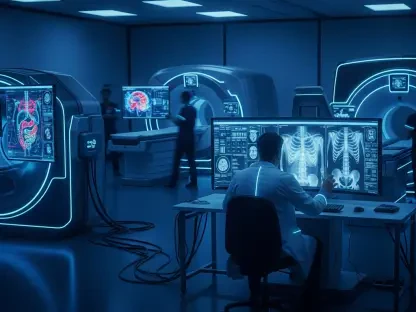In an intriguing experiment exploring the capabilities of artificial intelligence, researchers have begun investigating whether AI systems like ChatGPT can successfully evaluate the sensory characteristics of food products, a task typically reliant on human testers. This study, spearheaded by Damir Torrico, an Assistant Professor at the University of Illinois Urbana-Champaign, delves into this concept by having AI assess a variety of brownie recipes. The implications of this research could potentially transform the food industry, streamlining the development of new products and enhancing the accuracy of sensory evaluations.
The Current State of Sensory Evaluation in the Food Industry
Human Testers: Essential but Flawed
Traditionally, food companies depend heavily on trained human testers and consumer panels to evaluate new product prototypes. These processes are critical yet often marred by human biases, sensory fatigue, and logistical difficulties. Human testers provide valuable feedback on product characteristics such as flavor, texture, and overall appeal, which are essential for refining recipes and ensuring market success. However, their evaluations can be influenced by personal preferences, mood swings, and other subjective factors, which may lead to inconsistent results.
Moreover, the process of organizing and conducting testing panels is both time-consuming and costly. Companies must recruit and compensate testers, arrange controlled testing environments, and handle logistical challenges related to sample preparation and distribution. These complexities are further exacerbated when dealing with multiple product prototypes or non-food-grade ingredients, which require careful handling and cannot be directly tasted. As a result, there is a pressing need for more efficient and cost-effective methods to evaluate food products, making the exploration of AI solutions highly relevant.
The Role of AI in Potentially Streamlining Processes
In response to these challenges, there is growing interest in the potential of AI to streamline sensory evaluation processes. The use of systems like ChatGPT could render initial rounds of testing more efficient, allowing food scientists to concentrate their resources on recipes that show the most promise based on AI feedback. By simulating human sensory evaluations, AI can offer preliminary insights into a product’s sensory attributes, reducing the number of prototypes that need to be evaluated by human testers.
The integration of AI in the sensory evaluation process also opens up new possibilities for handling non-food-grade ingredients. Instead of relying solely on human testers, who cannot safely taste these ingredients, AI can analyze recipe formulations and predict sensory outcomes without the risk of exposure. This capability could significantly accelerate the development of innovative products, enabling food scientists to experiment with novel ingredients and combinations that might otherwise be too challenging or risky to assess through traditional methods.
The Experiment: ChatGPT Evaluates Brownies
Recipes Including Unconventional Ingredients
In the conducted study, forty brownie recipes featuring both traditional and unconventional ingredients like mealworm powder and fish oil were analyzed. The central question was whether ChatGPT could produce sensory evaluations that align with human experiences. By incorporating such unconventional ingredients, the researchers sought to challenge the AI’s ability to provide accurate and meaningful feedback on a wide range of sensory attributes. The diverse set of recipes allowed for a comprehensive assessment of ChatGPT’s capabilities and potential limitations in evaluating complex flavor profiles.
ChatGPT was supplied with the recipe formulations and tasked with describing the sensory characteristics, including taste, texture, and overall enjoyment for each brownie. These AI-generated evaluations were then analyzed and compared with existing human data to identify patterns and discrepancies. ChatGPT’s performance in this experiment provides valuable insights into the feasibility of using AI for sensory evaluation and its potential to complement or enhance traditional testing methods. The experiment serves as a critical step in understanding how AI can be leveraged to support food scientists and developers in creating innovative and appealing products.
Analyzing ChatGPT’s Feedback
ChatGPT was provided with the recipe formulations and asked to describe the taste, texture, and overall appeal of each brownie. An intriguing trend observed was the AI’s tendency to provide overwhelmingly positive feedback, a pattern aligned with the psychological concept known as hedonic asymmetry. This concept suggests that both AI and humans are naturally inclined to describe beneficial items, such as food, in positive terms due to its essential role in survival and well-being. The tendency to emphasize positive attributes highlights an important aspect of human experience that AI can replicate, albeit with some limitations.
Although ChatGPT’s positive bias may seem beneficial, it also raises questions about the reliability and applicability of AI-generated evaluations in real-world settings. While AI can provide valuable initial insights, its tendency to overemphasize positive aspects may lead to an incomplete or skewed understanding of a product’s sensory characteristics. To address this, researchers like Torrico aim to refine AI systems, training them to use a more balanced and nuanced vocabulary akin to human sensory panels. By enhancing the descriptive capabilities of AI, its evaluations can become more accurate, providing food scientists with more reliable data to guide product development.
Implications and Future Directions
Positive Bias and Hedonic Asymmetry
Hedonic asymmetry suggests that both AI and humans are inclined to describe food in positive terms, generally because of its fundamental role in survival. This raises interesting questions about the reliability and applicability of AI-generated evaluations in a real-world setting. While the positive bias observed in ChatGPT’s feedback highlights its ability to mimic human behavior, it also underscores the need for improvement. AI systems must be trained to recognize and articulate negative attributes accurately to provide a comprehensive assessment of food products.
Torrico’s findings indicate that refining AI’s vocabulary and descriptive capabilities is crucial for its effective use in sensory evaluation. By incorporating a broader range of sensory descriptors and training AI to balance positive and negative aspects, researchers can enhance the precision of AI-generated evaluations. This improvement will enable food scientists to rely more confidently on AI as a preliminary screening tool, ultimately facilitating the development of higher-quality products. As AI continues to evolve, its role in the food industry is likely to expand, offering new opportunities for innovation and efficiency.
The Potential Benefits for the Food Industry
Despite the positive bias, the preliminary use of ChatGPT as a screening tool could offer substantial benefits. By narrowing down the most promising recipes before they reach human testers, AI could save significant time and costs, revolutionizing how new food products are developed. The AI’s ability to rapidly analyze multiple formulations and provide consistent feedback allows food scientists to focus their efforts on refining the most promising candidates, streamlining the product development process.
Additionally, AI can facilitate the exploration of new and unconventional ingredients by predicting their sensory impact without the need for extensive human testing. This capability enables food developers to innovate more freely, experimenting with novel combinations and pushing the boundaries of traditional culinary practices. As AI systems become more sophisticated, their integration into the food industry will likely lead to faster and more efficient product development cycles, ultimately benefiting both producers and consumers. The potential for AI to enhance creativity and precision in food science is vast, marking a significant step forward in the evolution of the industry.
Future Prospects for AI in Food Science
Training AI for More Nuanced Evaluations
Looking ahead, researchers like Torrico aim to train AI systems to adopt a vocabulary similar to human sensory panels, enhancing the accuracy and usefulness of AI in sensory evaluations. This advancement could further integrate AI into the food development process. By refining AI’s descriptive language and improving its ability to recognize subtle sensory differences, researchers can ensure that AI-generated evaluations are both comprehensive and reliable. This ongoing effort to enhance AI’s evaluative capabilities will likely lead to more precise and actionable feedback, benefiting food scientists and developers alike.
The successful integration of AI into sensory evaluation processes promises to reduce the time and costs associated with traditional testing methods. As AI becomes more adept at providing nuanced evaluations, its role in the food industry will continue to expand, offering new opportunities for innovation and efficiency. The potential for AI to complement and enhance human sensory panels is significant, driving the industry towards more sophisticated and effective product development practices. The collaboration between AI and human testers represents a promising future for food science and technology, with substantial benefits for both producers and consumers.
Towards the Evolution of Food Technology
Artificial intelligence is making waves in the culinary world, and exciting experiments are being conducted to explore its potential to critically evaluate the sensory characteristics of food, a domain typically reserved for human testers. Researchers are now delving into whether AI systems, such as ChatGPT, can accurately analyze the taste, texture, and aroma of food products. Leading this innovative study is Damir Torrico, an Assistant Professor at the University of Illinois Urbana-Champaign. His team is focusing on having AI assess different brownie recipes to understand its proficiency in sensory evaluation. Should these experiments prove successful, the consequences could be profound for the food industry. AI could streamline the development of new food products, making the process more efficient while also enhancing the precision of sensory evaluations. This could revolutionize how food products are tested, ultimately transforming industry standards and practices across the board, ranging from product development to quality control.









